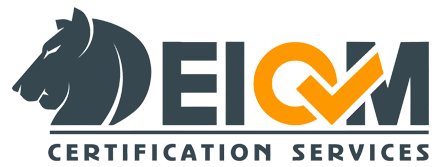ISO 14001 is an internationally recognized standard that outlines the requirements for an effective EMS. In today’s world, businesses are increasingly recognizing the importance of sustainability and environmental responsibility.
The International Organization for Standardization (ISO) has developed a range of standards to help organizations manage their impact on the environment effectively. One such standard is ISO 14001, which provides guidelines for establishing, implementing, maintaining, and improving an environmental management system (EMS). In this article, we will explore the key aspects of this standard and its significance in promoting environmental sustainability.
Introduction to ISO 14001
this standard It sets the framework for organizations to identify and control their environmental impact, enhance their environmental performance, and comply with applicable environmental regulations. ISO 14001 provides a systematic approach to managing environmental aspects, such as waste management, energy consumption, emissions, and resource usage.
Understanding Environmental Management Systems (EMS)
An EMS refers to the framework, processes, and procedures that an organization establishes to manage its environmental responsibilities. It involves identifying environmental aspects, setting objectives and targets, implementing operational controls, and monitoring performance. this standard provides a structured approach to developing an EMS that aligns with an organization’s goals, ensuring continuous improvement and minimizing negative environmental impacts.
The Benefits of Implementing
Implementing ISO 14001 brings numerous benefits to organizations. Firstly, it helps enhance the organization’s reputation by demonstrating its commitment to environmental sustainability. this standard certification is globally recognized and can provide a competitive advantage in the marketplace. Secondly, standard 14001 enables organizations to identify and mitigate environmental risks, reducing the likelihood of accidents, pollution, and legal non-compliance. Thirdly, this standard promotes resource efficiency, leading to cost savings and improved operational performance. Finally, this standard fosters a culture of environmental responsibility among employees, stakeholders, and the wider community.
The Key Elements of ISO 14001
ISO 14001 is structured around several key elements that organizations must address to achieve effective environmental management:
Environmental Policy
An environmental policy is a statement of an organization’s commitment to environmental sustainability. It outlines the organization’s goals, objectives, and the framework for decision-making related to environmental aspects.
Planning
The planning phase involves identifying significant environmental aspects, setting environmental objectives and targets, and developing action plans to achieve them. It also includes defining roles, responsibilities, and resources required for effective implementation.
Implementation
During the implementation phase, organizations put their plans into action. This includes raising awareness among employees, establishing operational controls, monitoring and measuring environmental performance, and conducting regular audits.
Checking and Corrective Action
The ISO 14001 review phase includes monitoring and measuring environmental performance against set objectives and targets. It also includes conducting periodic internal audits and taking corrective actions to address non-conformities and improve performance.
Management Review
The management review is a crucial element of ISO 14001. It involves top management reviewing the EMS’s performance, effectiveness, and suitability. This ensures that the EMS remains aligned with the organization’s strategic goals and promotes continuous improvement.
The Process of ISO 14001 Certification
To obtain ISO 14001 certification, organizations must follow a specific process. It begins with a gap analysis to assess their existing environmental management practices against the standard 14001 requirements. Organizations then develop and implement an EMS based on the standard’s guidelines. Once the EMS is fully operational, an accredited certification body conducts an audit to assess its compliance with this standard. If the organization meets all the requirements, it receives this ISO certification, indicating its commitment to environmental responsibility.
Case Studies: Successful Implementation of ISO 14001
Several organizations have successfully implemented ISO 14001 and reaped the benefits of improved environmental performance. For example, Company X, a manufacturing firm, reduced its energy consumption by 20% and implemented waste management practices that resulted in significant cost savings. Company Y, a service provider, achieved this standard certification, enhancing its brand reputation and attracting environmentally conscious clients. These case studies demonstrate the positive impact iso 14001 can have on organizations across various sectors.
Common Challenges and Solutions in ISO 14001 Implementation
Implementing ISO 14001 may pose challenges for organizations. Some common challenges include resistance to change, lack of employee engagement, and resource constraints. However, organizations can overcome these challenges by fostering a culture of environmental responsibility, providing training and education, and allocating adequate resources to the EMS implementation process. Engaging employees in the process and emphasizing the benefits of this standard can also facilitate smoother implementation.
A Step Towards Sustainability
ISO 14001 plays a crucial role in promoting sustainability and responsible environmental practices. By implementing this standard, organizations contribute to the protection of the environment, conserve natural resources, and reduce pollution. Moreover, this standard aligns with the United Nations Sustainable Development Goals (SDGs) and provides a framework for organizations to contribute towards achieving these global targets.
Conclusion
ISO 14001 is an essential standard for organizations seeking to establish effective environmental management systems. It provides a structured approach to identifying, managing, and improving environmental performance. By implementing this standard, organizations can enhance their reputation, reduce environmental risks, improve resource efficiency, and contribute to a sustainable future.
Contact EIQM
To contact us, please fill out the form below. We will contact you as soon as possible. You can also apply through this form if you would like to receive system certification or representation of EIQM Certification Body.

